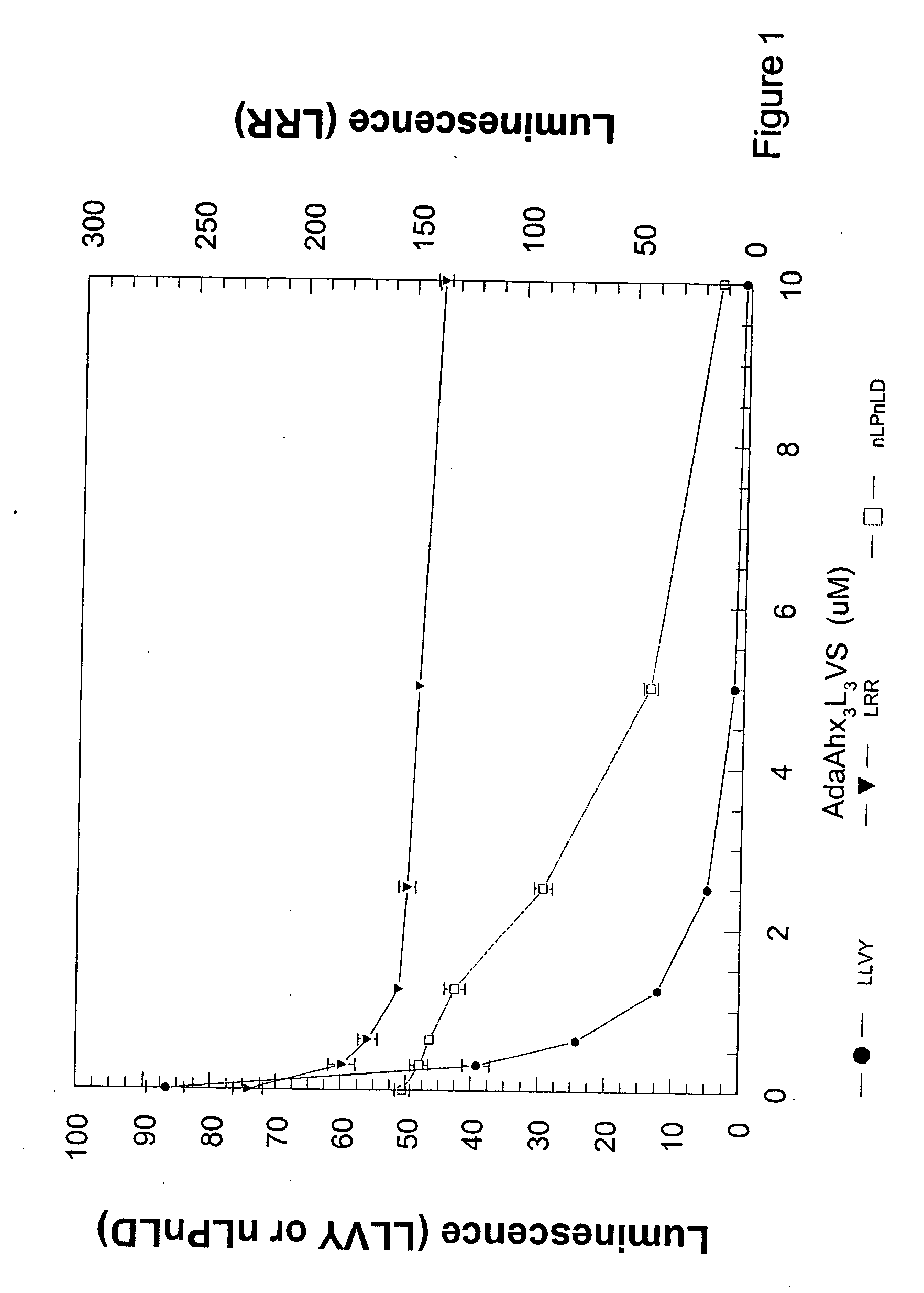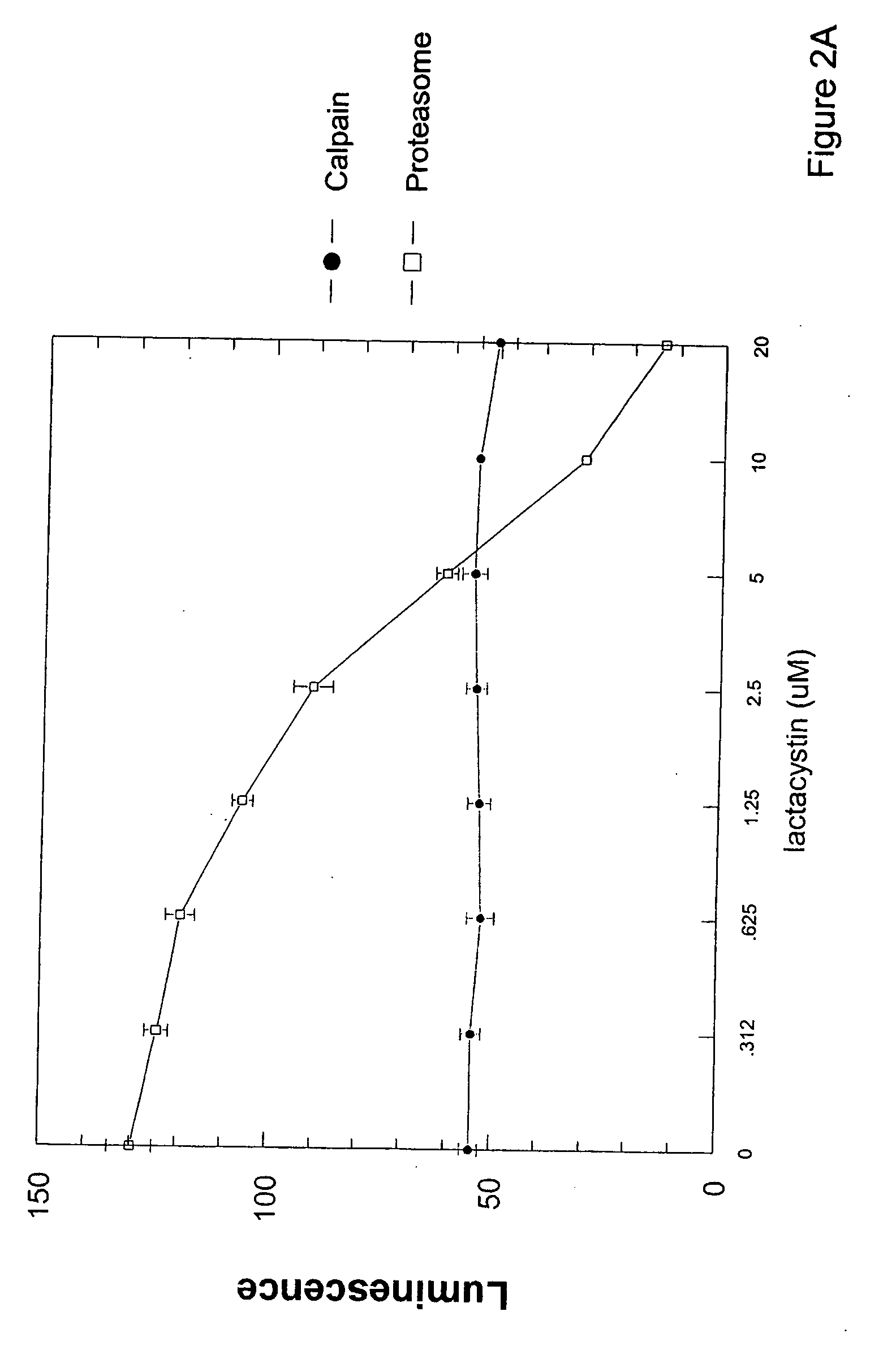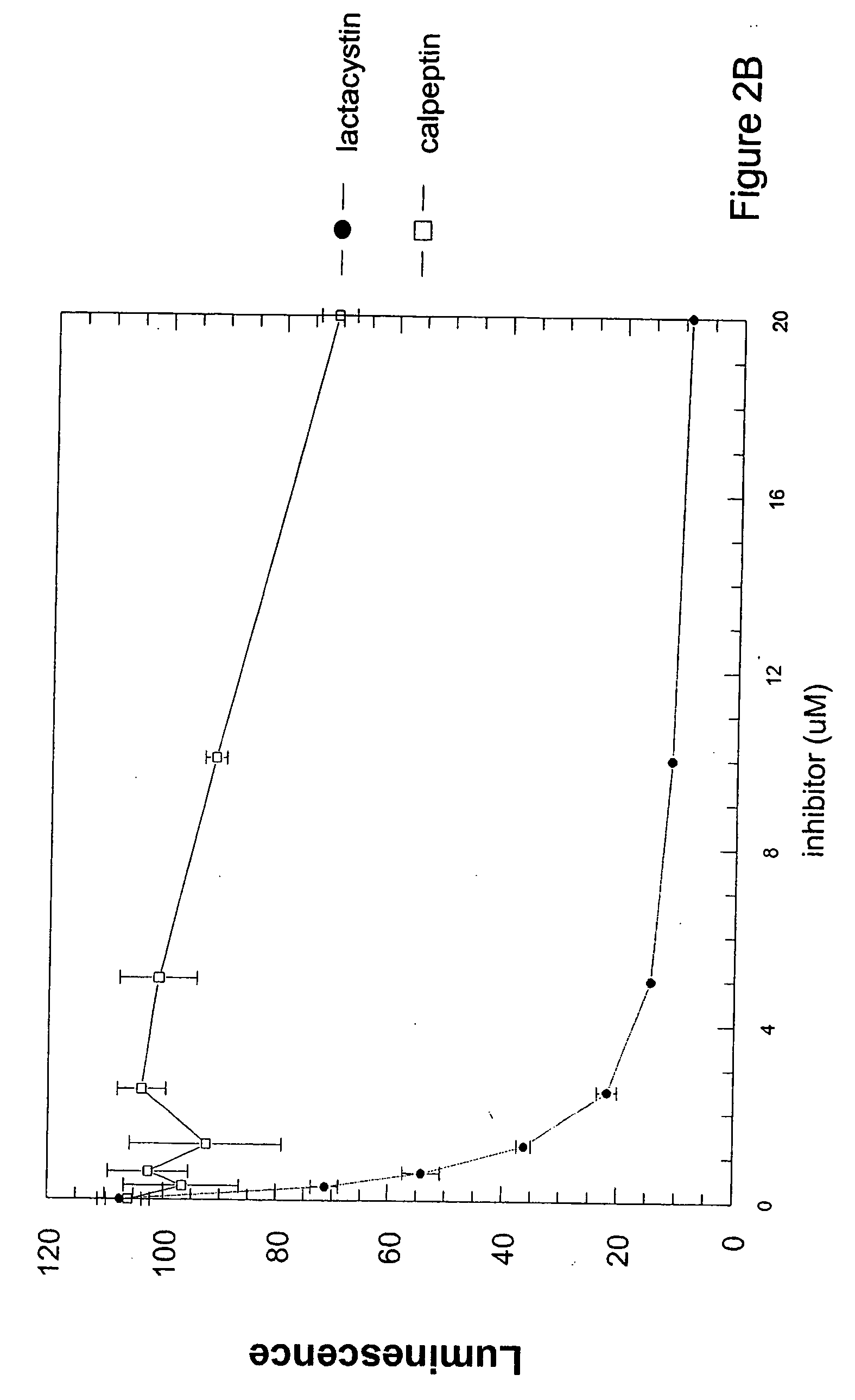Cell-based luminogenic and nonluminogenic proteasome assays
a luminogenic and non-luminogenic technology, applied in the field of cell-based luminogenic and non-luminogenic proteasome assays, can solve the problems of apoptosis of cells, high cost of many currently available synthetic substrates, and inability to detect luminogenic proteins,
- Summary
- Abstract
- Description
- Claims
- Application Information
AI Technical Summary
Benefits of technology
Problems solved by technology
Method used
Image
Examples
example i
Protease Retention and Release Cell Viability Multiplex Assays
[0075] Live cell and dead cell assays are widely used to monitor the change in cellular viability in response to specific chemical, biological or physical treatments. Viability and cytotoxicity assays are generally converse and measure different biomarkers. Methods for assessment of general changes in cell viability by cytotoxicity have historically related to changes in outer membrane permeability. Classical methods of detecting compromised membrane structure include trypan blue exclusion, nucleic acid staining, and lactate dehydrogenase release (Riss et al., 2004; Myers et al., 1998). Assays for the assessment of cell function or proliferation include tritiated thymidine incorporation, ATP content, tetrazolium dye conversion or fluorescein diacetate (Cook et al., 1989). The assumption is that intact cell membranes do not allow bulky charged molecules or peptides to enter from the extracellular space into the cytosol. C...
example ii
Cell-Based Assays for Proteasome Activities
Materials and Methods
Plate Preparation
[0113] NCI-H226 cells (ATCC #CRL-5826) were maintained as an attached line using RPMI 1640 (Sigma #R-8005) with 10% fetal bovine serum (Hyclone # SH30070) and passaged as needed. Jurkat, HL-60 and U937 suspension cell lines were likewise maintained and passaged. To prepare cells for a cell-based proteasome assay, adherent cells were harvested from the parent flask by removing medium, rinsing the flask with D-PBS and incubated with trypsin-EDTA (Sigma T-4040) for 3 to 4 minutes at 37° C. The trypsin reaction was stopped by adding complete medium containing serum, and cells were then centrifuged 4 minutes at 200×G. The cell pellet was suspended in fresh medium, cells counted by trypan blue exclusion and adjusted to 1.11×105 cells / ml. A 96-well clear bottom / white walled plate (Costar# 3610) was obtained and 90 μl / well of cell suspension or medium alone was dispensed. Plate was cultured in a humidified...
PUM
 Login to View More
Login to View More Abstract
Description
Claims
Application Information
 Login to View More
Login to View More - R&D
- Intellectual Property
- Life Sciences
- Materials
- Tech Scout
- Unparalleled Data Quality
- Higher Quality Content
- 60% Fewer Hallucinations
Browse by: Latest US Patents, China's latest patents, Technical Efficacy Thesaurus, Application Domain, Technology Topic, Popular Technical Reports.
© 2025 PatSnap. All rights reserved.Legal|Privacy policy|Modern Slavery Act Transparency Statement|Sitemap|About US| Contact US: help@patsnap.com



